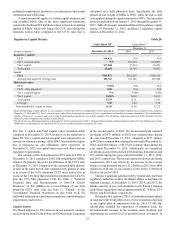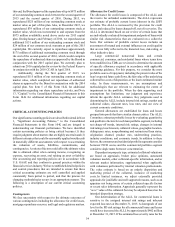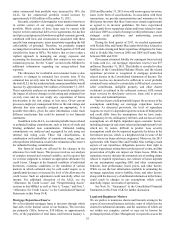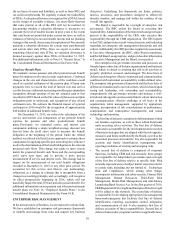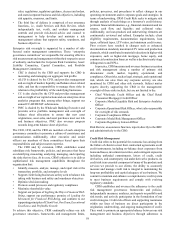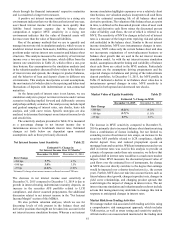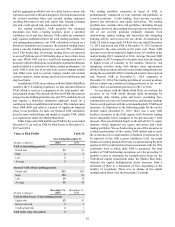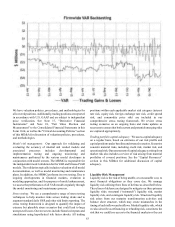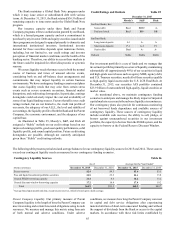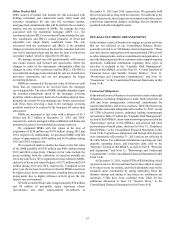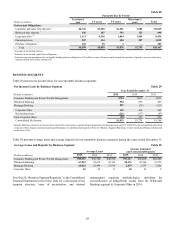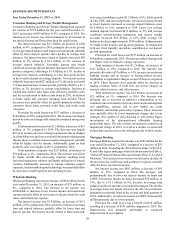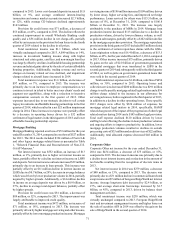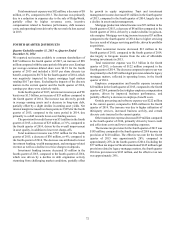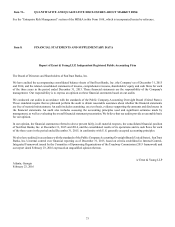SunTrust 2015 Annual Report Download - page 91
Download and view the complete annual report
Please find page 91 of the 2015 SunTrust annual report below. You can navigate through the pages in the report by either clicking on the pages listed below, or by using the keyword search tool below to find specific information within the annual report.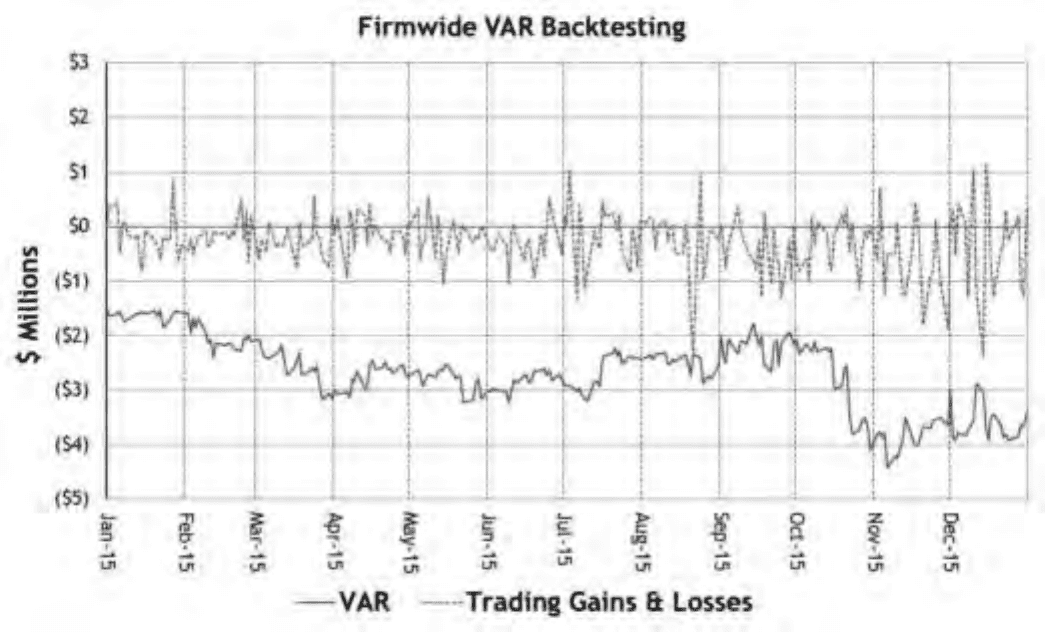
63
We have valuation policies, procedures, and methodologies for
all covered positions. Additionally, trading positions are reported
in accordance with U.S. GAAP and are subject to independent
price verification. See Note 17, "Derivative Financial
Instruments" and Note 18, "Fair Value Election and
Measurement" to the Consolidated Financial Statements in this
Form 10-K, as well as the "Critical Accounting Policies" section
of this MD&A for discussion of valuation policies, procedures,
and methodologies.
Model risk management: Our approach for validating and
evaluating the accuracy of internal and vended models and
associated processes includes developmental and
implementation testing and ongoing monitoring and
maintenance performed by the various model developers in
conjunction with model owners. The MRMG is responsible for
the independent model validation for the VAR and Stressed VAR
models. The validation typically includes evaluation of all model
documentation, as well as model monitoring and maintenance
plans. In addition, the MRMG performs its own testing. Due to
ongoing developments in financial markets, evolution in
modeling approaches, and for purposes of model enhancement,
we assess the performance of all VAR models regularly through
the model monitoring and maintenance process.
Stress testing: We use a comprehensive range of stress testing
techniques to help monitor risks across trading desks and to
augment standard daily VAR and other risk limits reporting. The
stress testing framework is designed to quantify the impact of
extreme but plausible stress scenarios that could lead to large
unexpected losses. Our stress tests include historical repeats and
simulations using hypothetical risk factor shocks. All trading
positions within each applicable market risk category (interest
rate risk, equity risk, foreign exchange rate risk, credit spread
risk, and commodity price risk) are included in our
comprehensive stress testing framework. We review stress
testing scenarios on an ongoing basis and make updates as
necessary to ensure that both current and potential emerging risks
are captured appropriately.
Trading portfolio capital adequacy: We assess capital adequacy
on a regular basis, based on estimates of our risk profile and
capital positions under baseline and stressed scenarios. Scenarios
consider material risks, including credit risk, market risk, and
operational risk. Our assessment of capital adequacy arising from
market risk also includes a review of risk arising from material
portfolios of covered positions. See the “Capital Resources”
section in this MD&A for additional discussion of capital
adequacy.
Liquidity Risk Management
Liquidity risk is the risk of being unable, at a reasonable cost, to
meet financial obligations as they come due. We manage
liquidity risk utilizing three lines of defense as described below.
These lines of defense are designed to mitigate our three primary
liquidity risks: structural (“mismatch”) liquidity risk, market
liquidity risk, and contingent liquidity risk. Structural liquidity
risk arises from our maturity transformation activities and
balance sheet structure, which may create mismatches in the
timing of cash inflows and outflows. Market liquidity risk, which
we also describe as refinancing or refunding risk, constitutes the
risk that we could lose access to the financial markets or the cost


